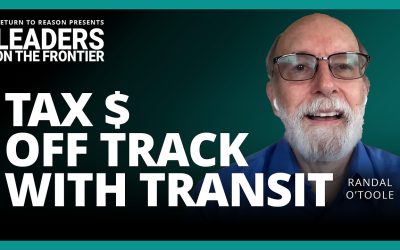Winnipeg’s taxi business represents a textbook case of what economists call “regulatory capture” — the Taxicab Board pays more attention to protecting cab owners’ capital gains than the needs of their customers, who want more cabs, better service and lower prices.
In a sprawling city like Winnipeg, where the winters are harsh and long, regulatory capture encumbers the industry’s ability to fulfil its role as a necessary part of the overall transportation system.
For example, despite the population basically doubling since 1946, the number of permanent taxi business licences granted by the TCB has barely budged. The ratio of residents to taxis has soared — now about 1,800 to one in Winnipeg compared to 900 to one in Calgary.
Despite too few cabs, driving a taxi for a living is fraught with risk and worry. Owning a cab only brings a modest financial return for most, and non-owning drivers do worse.
So, the present situation is not good for either customers or taxi owners. Yet, neither taxi owners nor their passengers can fix the situation — control rests with the government-appointed TCB.
Despite its overwhelming authority issuing taxi business and driving licences, determining the number of cabs, and setting standards, fares and fees, the TCB stays with the status quo while lacking a complete data base on the demand for taxis.
First, let us review the lot of a taxi owner. If new to taxi ownership and not “taking over” from a relative, new owners have to pony up as much as $400,000 to get started.
The price is set by the market and taxi business licences have a high value because of the artificially low number of business licences, which allows demand to exceed supply. Drivers also have to pass muster with the TCB — demonstrate language skills, have no criminal record, have an acceptable car, knowledge of the city, and vehicle insurance ($6,000 plus).
Taxi owner drivers get used to long days, nights and weeks, without even statutory holidays. To net $25,000 a year before taxes, owners with debts to pay keep their cabs on the road at least 16-hours a day every day (24-hours if they have a mate to split the driving with). Hundred-hour weeks are not unusual. As for “pay raises,” they depend on the TCB. Taxi owners must be patient because the TCB moves slowly.
New owners are often immigrants to Manitoba who “buy a job” for themselves and family members. They risk their life savings, often along with that of their extended family. When access to family money falls short of what is needed, high interest loans can enter the picture. Driving a cab is risky, and not just from a financial perspective. Too often drivers are assaulted, some have been killed.
Initially, there was no cost for acquiring a taxi business licence except for the vehicle. H.L. Stevens, in his 1972 Taxicab Inquiry Commission Report, noted transfer prices had “skyrocketed from… $13,000 in 1966 to as high as $24,000 in 1970.” He recommended a cap of “two times the replacement value of the vehicle.”
But, as time went on, and the TCB failed to act on Stevens’ concern, the system of restraining the supply of licences drove up the price demanded by business licence holders to as high as $400,000.
There are strong arguments for increasing the number of permanent licences. The primary one is to provide better service. There are no restrictions placed on the number of most new enterprises, so why taxicabs?
TCB has acknowledged that a major factor in its limiting the number of permanent taxicab business licences is that if the supply increases the value of existing licences will fall.
As indicated at the start, that is a textbook case of what economists call “regulatory capture” — the regulator pays more attention to the concerns of the industry than those of the customers.
There is a way out of the dilemma, but it would take political courage.
The Taxicab Board could issue new permanent taxi business licences to meet public demand for more taxis and, with the new licences there would be no transfer cost other than for the vehicle.
This would create much less risk and worry for new entrants, with their life savings no longer on the line, and it should increase their annual net returns.
To be fair to existing taxi licence holders, the TCB could implement a temporary surcharge on fares, to last as long as necessary to compensate existing licence holders for the falling value of licences that they paid dearly for in a market skewed by regulation.
A similar approach was taken by Australia when it exited supply management for the dairy industry.
Over the longer term, the taxi industry will face a new economic threat. The ability to instantly summon a ride over a smartphone from an independent non-licenced service provider means the industry will need to radically innovate in the face of strong customer power. That is a story for another day.


